Multi-Graduation




Before



Part the hair on both sides from the crown to the back of the ears. Next, create a rectangular disconnected section on the top area by taking a parting on both sides (from the recession area) running into the previous partings. Sections may vary depending on the individual hair type and texture.



Part the hair from crown to nape, then take out a fine, horizontal square section from the parting.



Elevate the hair directly out from the head and cut a horizontal guideline tight to the nape. Note: The first section will determine eventual height of the graduation in the back area. These lengths may vary depending on individual hair type and texture.

Advertisement




Repeat the same process on the opposite side. Tip: Cut both the left and right side simultaneously as you work up the head to ensure a good balance.



Keeping even tension, continue taking subsequent sections as you graduate and work up the back of the head toward the crown. Focus particularly on the square shape being created, plus retaining the weight behind the ears. Note: The individual head shape determines the amount of elevation used in the graduation to create the amount of required weight.



View of the finished back section before refining.



Blow-dry the back section.

Advertisement




Refine the shape by working across the back section using a round graduated technique to remove the corner at the top of the previously graduated back area. Note: Remain focused on retaining the weight behind the ear.



Using the point of the scissors, cut an arched line from the center back outward and repeat on the second side. Note: Cut the outline freehand using no tension, following the natural hairline where possible.



View of the completed back section.



Take a small diagonal section at the bottom of the left side and section out the lock of hair; this is a key feature of the look.

Advertisement




Taking horizontal-diagonal sections from right to left toward the hairline, cut a graduated section and work up toward the top overdirecting each section to the previous. Note: Keep the cutting line parallel to the section.



Blow-dry the side section.



Refine the section by removing the corner at the top of the graduated area. Using the point of the scissors, refine the hairline and the area around the ear.



View of the completed first side.

Advertisement




On the opposite side, take diagonal sections and cut a round graduated shape from the front toward the back, angling your fingers tighter toward the back of the ear to retain length in the front hairline. Note: Do not connect with the back section of weight behind the ear.



Continue with subsequent sections working toward the top of the side, bringing each section to the previous.



Blow-dry the side section.



Refine the section by removing the corner of the graduation.

Advertisement




Use the point of the scissors, refine the area around the ear.



Combing hair slightly forward, carefully refine the hairline with the point of the scissors.



Visually review the completed underside; using a slicing technique (where required), remove fine pieces of weight. Note: The suitability of this technique will depend on the individual hair type and texture. At the top of the back and side sections, lift up using a layering technique and connect if necessary; this will also depend on the individual hair type and texture.



View of the completed underside.

Advertisement




Take a horizontal section toward the hairline.



Slightly overdirect the section back and cut a line angling toward the cheekbone. Hold hair in your fingers using medium tension. Note: The cheekbone is your visual guide.



Continue taking subsequent sections, elevating very slightly each time.



When moving closer to the front area, use less elevation and keep the line closer to the face.

Advertisement




Blow-dry the top section.



Gently refine the top section with a pointing technique.



View of the completed cut prior to the color application.



Finished Look


Multi-Graduation
Joico’s newest trend collection, Unison, celebrates the fundamentals of hairdressing, while paying homage to a few masters of modern design who illustrated that fine details can make a dramatic difference. This modern, versatile shape celebrates the diversity of graduation. Different techniques of internal graduation are used, creating the seamless “unison of cut and color.” A fine attention to detail and close control of the internal and external shapes pull together to create an exciting look that inspires confidence.
HOW-TO STEPS 
-
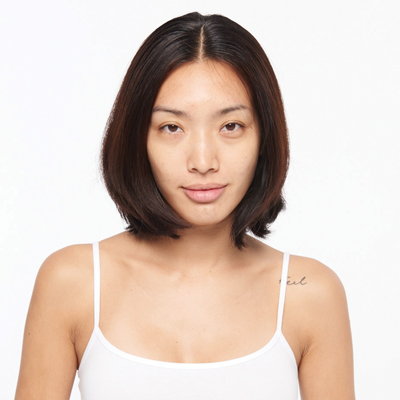
 1
1Before
-
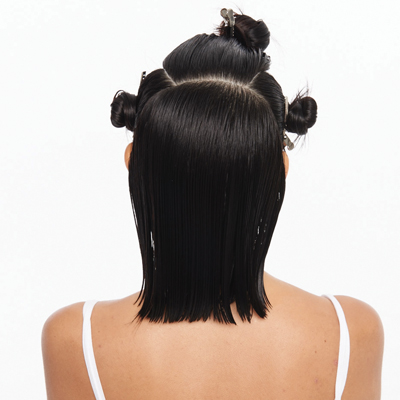
 2
2Part the hair on both sides from the crown to the back of the ears. Next, create a rectangular disconnected section on the top area by taking a parting on both sides (from the recession area) running into the previous partings. Sections may vary depending on the individual hair type and texture.
-
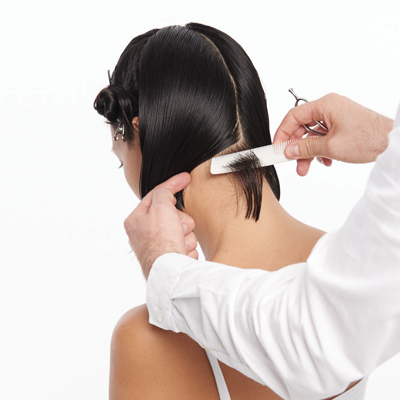
 3
3Part the hair from crown to nape, then take out a fine, horizontal square section from the parting.
-

 4
4Elevate the hair directly out from the head and cut a horizontal guideline tight to the nape. Note: The first section will determine eventual height of the graduation in the back area. These lengths may vary depending on individual hair type and texture.
-

 5
5Repeat the same process on the opposite side. Tip: Cut both the left and right side simultaneously as you work up the head to ensure a good balance.
-
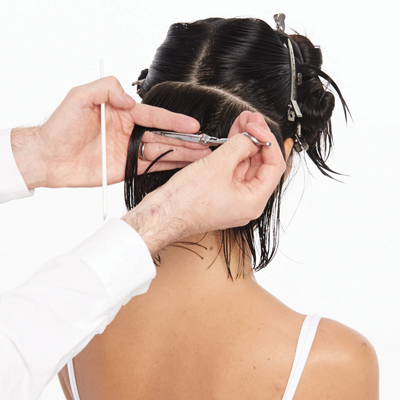
 6
6Keeping even tension, continue taking subsequent sections as you graduate and work up the back of the head toward the crown. Focus particularly on the square shape being created, plus retaining the weight behind the ears. Note: The individual head shape determines the amount of elevation used in the graduation to create the amount of required weight.
-

 7
7View of the finished back section before refining.
-
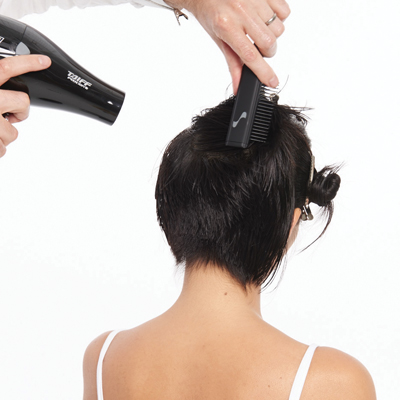
 8
8Blow-dry the back section.
-

 9
9Refine the shape by working across the back section using a round graduated technique to remove the corner at the top of the previously graduated back area. Note: Remain focused on retaining the weight behind the ear.
-
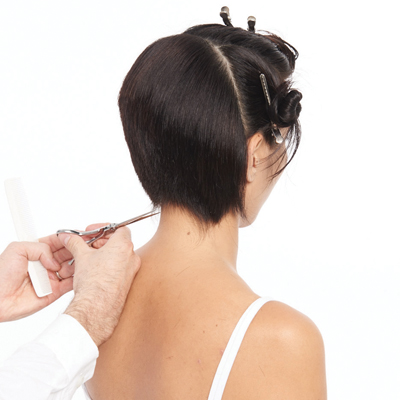
 10
10Using the point of the scissors, cut an arched line from the center back outward and repeat on the second side. Note: Cut the outline freehand using no tension, following the natural hairline where possible.
-
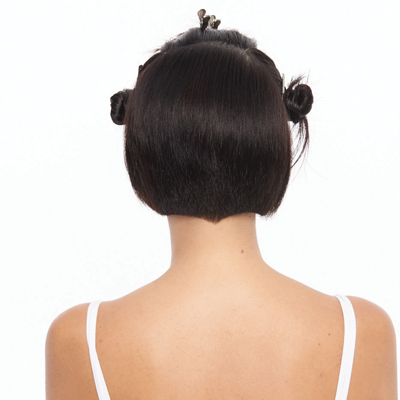
 11
11View of the completed back section.
-

 12
12Take a small diagonal section at the bottom of the left side and section out the lock of hair; this is a key feature of the look.
-

 13
13Taking horizontal-diagonal sections from right to left toward the hairline, cut a graduated section and work up toward the top overdirecting each section to the previous. Note: Keep the cutting line parallel to the section.
-

 14
14Blow-dry the side section.
-

 15
15Refine the section by removing the corner at the top of the graduated area. Using the point of the scissors, refine the hairline and the area around the ear.
-
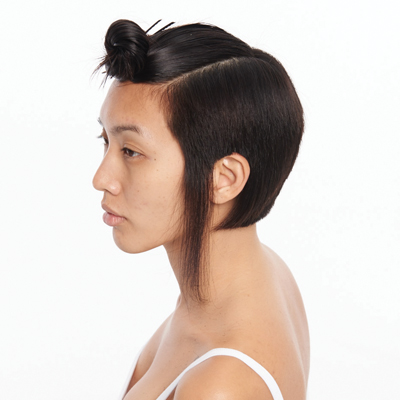
 16
16View of the completed first side.
-

 17
17On the opposite side, take diagonal sections and cut a round graduated shape from the front toward the back, angling your fingers tighter toward the back of the ear to retain length in the front hairline. Note: Do not connect with the back section of weight behind the ear.
-
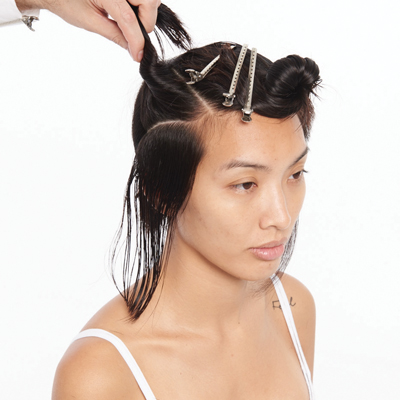
 18
18Continue with subsequent sections working toward the top of the side, bringing each section to the previous.
-

 19
19Blow-dry the side section.
-
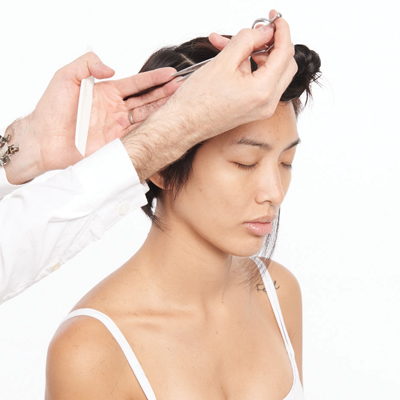
 20
20Refine the section by removing the corner of the graduation.
-
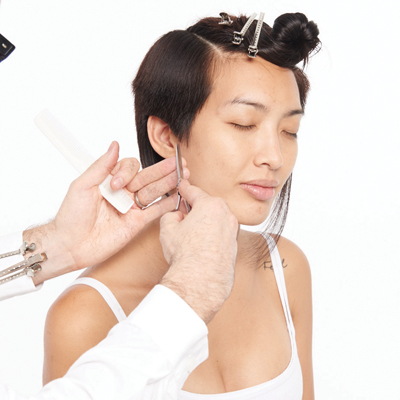
 21
21Use the point of the scissors, refine the area around the ear.
-

 22
22Combing hair slightly forward, carefully refine the hairline with the point of the scissors.
-
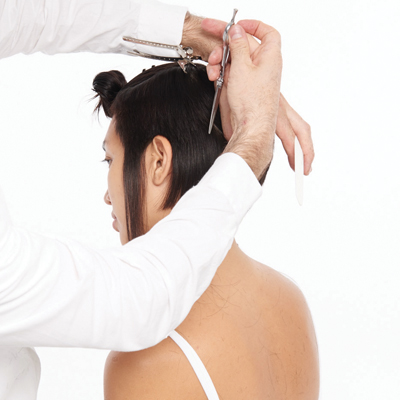
 23
23Visually review the completed underside; using a slicing technique (where required), remove fine pieces of weight. Note: The suitability of this technique will depend on the individual hair type and texture. At the top of the back and side sections, lift up using a layering technique and connect if necessary; this will also depend on the individual hair type and texture.
-

 24
24View of the completed underside.
-
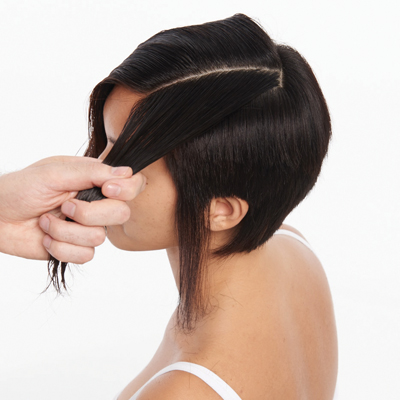
 25
25Take a horizontal section toward the hairline.
-
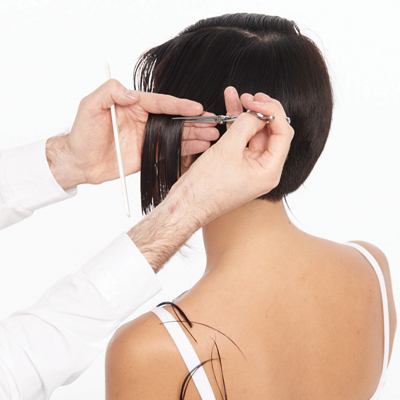
 26
26Slightly overdirect the section back and cut a line angling toward the cheekbone. Hold hair in your fingers using medium tension. Note: The cheekbone is your visual guide.
-
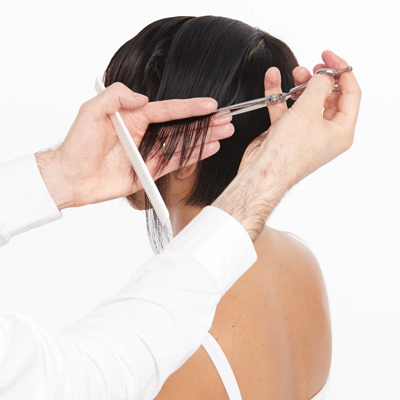
 27
27Continue taking subsequent sections, elevating very slightly each time.
-
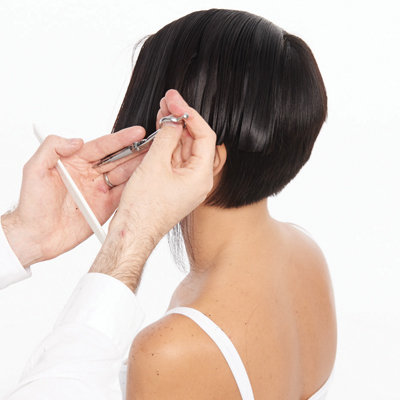
 28
28When moving closer to the front area, use less elevation and keep the line closer to the face.
-
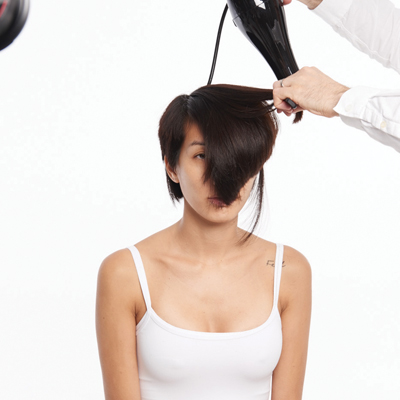
 29
29Blow-dry the top section.
-
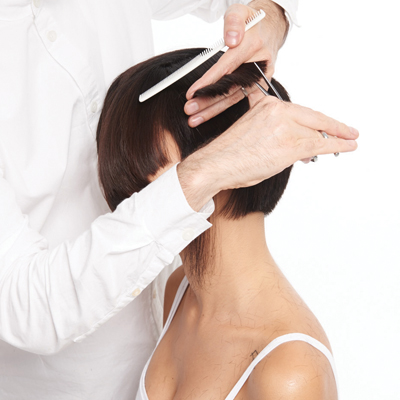
 30
30Gently refine the top section with a pointing technique.
-

 31
31View of the completed cut prior to the color application.
-

 32
32Finished Look
More from
Joico
-
Curls
How To Use A Consultation To Address Curly Client Concerns
-
BTC Events
Celebrity Colorist Justin Anderson Joined BTC’s “On Tour” Nashville Benefit Show
-
BTC Hair Trend Report
The Biggest Hair Color Trends of Fall 2024
-
Blonde
Butter Blonde Guide: Toning, Lightening & Technical Tips
-
Blonde
Lightening Textured Hair: The Must-Dos & Mistakes To Avoid
-
Brunette
Soft-Dimension Brunette Without Any Lightener: Here’s How
-
#ONESHOT HAIR AWARDS
3,000 Hairstylists in one Place? Here’s What You Missed at the 2024 BTC Show
-
Monthly Product Launch List
20 Major New Hair Innovations To Kick Off Fall
-
Blonde
Dark To Beige Platinum Blonde Transformation
-
Blonde
How to Connect 6 Inches of Regrowth in Less Than 25 Foils
-
Curls
Curls Like Us™ Collection
-
Hair Color
Dark Brown To Smoked Pearl Blonde Transformation
-
BTC Hair Trend Report
8 Hair Launches to Heat up Summer
-
Business
Why Promoting Women to Leadership Positions is the Key to a Successful Hair Brand
-
Color Protecting
Blonde Life® Color Enhancing Masques
-
Detangler
Blonde Strong™ Detangler
-
Monthly Product Launch List
9 New Product Launches To Bring Into Summer
-
News
The BTC Beauty Box is Back & Better Than Ever—Same Best-Sellers, No Subscription Needed.
-
Blonde
Virgin To High-Lift Dimensional Bronde
-
Met Gala
MET GALA 2024: EVERY CELEBRITY BEAUTY LOOK FROM THE RED CARPET
-
Met Gala
GIGI HADID’S MARILYN-INSPIRED MET GALA BOB
-
Balayage
One Step, Three-Layer Multidimensional Balayage
-
Balayage
Sunset Copper Balayage
-
Monthly Product Launch List
The Best Hair Launches Of March 2024


TRENDING NOW!
-
BTC Hair Trend Report
The Biggest Haircut Trends of 2024
-
Business
What Would You Do (Client Edition): Can I Fire My Stylist For The Cut Only?
-
Copper
What Is The "Cowboy Copper" Hair Trend? Here's What It Really Means...
-
Blonde
The Biggest Hair Color Trends of 2024
-
Haircuts
SHAG 101: The Dos And Don'ts
-
Bobs
The Hottest Haircut Trends of Fall 2024
-
Curly
Long Layers: 10 Pro Tips + Common Cutting Mistakes
-
Bobs
Textured Vs. Layered Bob: Read This To Learn The Difference!



